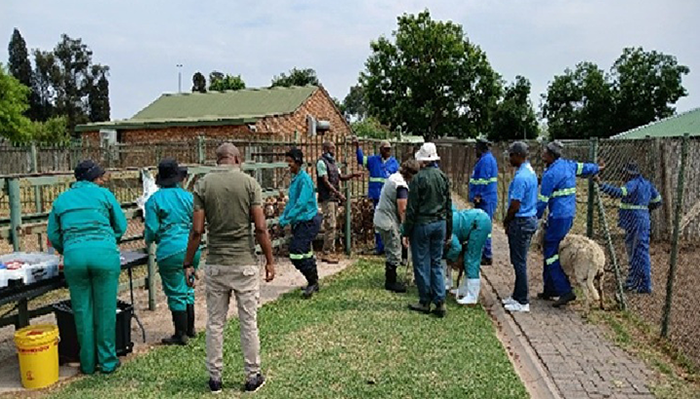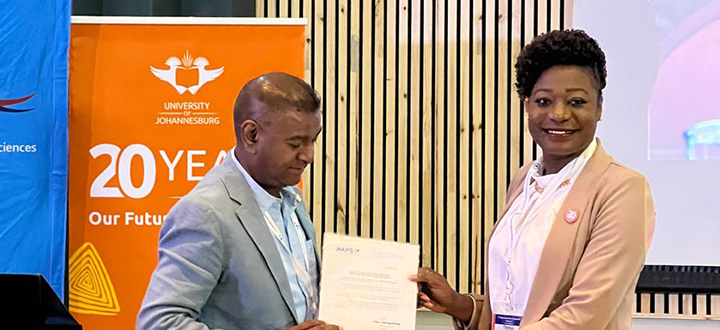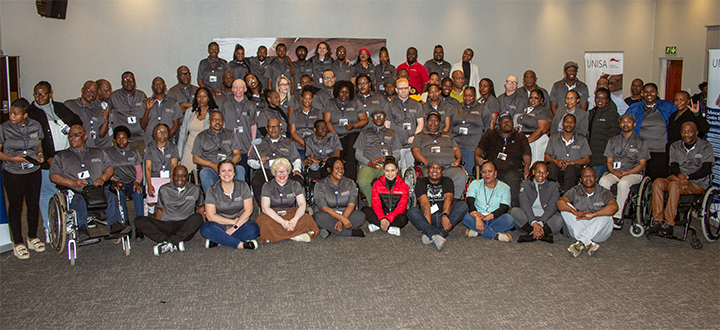News & Media
Work-integrated learning practice – extending beyond traditional distance education

Animal Health Work-Integrated Learning students gaining experience by working with livestock at the Rooihuiskraal Historical Terrain
Unisa, a mega open distance learning institution, has approximately 350 000 students registered for various qualifications ranging from undergraduate to doctoral level. While this scale is widely known, what is less commonly understood is that nearly 60 modules across five colleges incorporate one or more forms of work-integrated learning (WIL). The College of Education accounts for the largest number of students requiring real-world experience in the form of teaching practice, and there are approximately 8 500 students enrolled for WIL modules across the remaining four colleges.
Unisa recognises five WIL modalities, aligned with the draft National WIL Policy currently being developed by Universities South Africa (USAf) for consideration by the Minister of Higher Education. Of these, only workplace-based learning (WPBL) requires Unisa to source, secure and formally place students in approved workplaces for a defined period. Students are expected to familiarise themselves with the workplace culture, apply theoretical knowledge and gain practical experience.
This process is underpinned by a tripartite partnership between the university, the placement organisation and the student. A key requirement is that students receive relevant mentorship and that academic or contracted staff conduct monitoring site visits. These visits allow academics to interact with students, assess progress, resolve problems and provide necessary guidance. However, logistical constraints such as limited funding, vehicle availability, wide student distribution and high academic workloads make regular visits increasingly difficult.
Despite these obstacles, a recent site visit to the Rooihuiskraal Historical Terrain demonstrated the importance of direct academic engagement in the field. During this visit, six second-year Animal Health students, accompanied by two facilitators, participated in hands-on activities such as treating goats and sheep, marking treated animals and recording data. The facilitators provided mentoring throughout the process.
This visit highlighted the Department of Agriculture’s continued efforts to provide students with meaningful practical exposure, ensuring that they are adequately prepared for the workplace. It also illustrated the department’s innovative approach to student support within its WIL framework.
The Animal Health WIL programme offers week-long sessions across various locations in the country, during which students engage with local mentors and organisations. The programme design, which involves constant variation in tasks and environments, equips students to meet both academic and professional standards. The flexibility and scope of the programme nevertheless also require extensive administrative, logistical and financial support.
Academic visits such as these are not just about compliance; they are crucial for creating effective learning environments and ensuring that WIL is delivered to standard. This example clearly shows the dedication required to implement such programmes successfully, and the ongoing importance of nurturing strong partnerships with placement providers.
* By Graeme Wilson, WIL Office Manager, Directorate: Instructional Support and Services
Publish date: 2025-07-29 00:00:00.0


 Unisa co-hosts major operations management conference
Unisa co-hosts major operations management conference
 Strengthening disability-inclusive practices across higher education
Strengthening disability-inclusive practices across higher education
 Unisa astrophysicist receives prestigious Royal Society award
Unisa astrophysicist receives prestigious Royal Society award
 Unisa's eminent women academics recognised for science excellence
Unisa's eminent women academics recognised for science excellence
 Illicit trade in Africa’s natural resources: Experts sound the alarm at Unisa seminar
Illicit trade in Africa’s natural resources: Experts sound the alarm at Unisa seminar